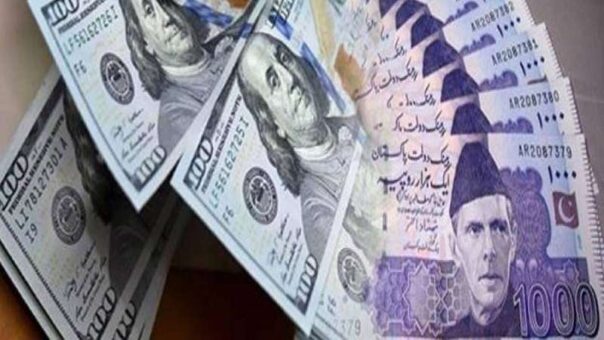Karachi, October 27, 2023 – In a concerning trend, the Pakistani Rupee (PKR) continued its slide against the US Dollar for the fifth consecutive day, closing at PKR 280.57 in the interbank foreign exchange market.
This persistent decline has raised concerns among traders and analysts alike, as the local currency dipped by approximately PKR 1.78 against the greenback since its closing rate of PKR 278.79 on October 20, 2023.
On a day-to-day basis, the PKR lost 48 paisas to the dollar compared to the previous day’s closing rate of PKR 280.57 in the interbank foreign exchange market, highlighting the volatility in the currency market.
Currency experts and financial analysts attribute this significant decline in the rupee’s value to several key factors, including decreasing foreign exchange reserves and a surge in import payment demand. These factors have combined to adversely impact the stability of the rupee, leading to its continuous depreciation.
One major concern is the shrinking foreign exchange reserves. According to experts, the country’s foreign exchange reserves fell by $257 million, reaching $12.656 billion by the week ending October 20, 2023, compared to $12.913 billion the previous week. A substantial decrease in foreign exchange reserves can directly impact a nation’s ability to maintain a stable currency value.
Similarly, the official foreign exchange reserves of the State Bank of Pakistan (SBP) also saw a significant drop, falling by $220 million to $7.494 billion by the week ending October 20, 2023, in comparison to $7.714 billion just one week prior. These diminishing reserves of the central bank can constrain its ability to intervene in the foreign exchange market and support the local currency.
Analysts argue that another contributing factor to the rupee’s fall is the increasing demand for imports. The recent economic recovery and a surge in import activities have put additional pressure on the rupee. As businesses expand their operations and the economy rebounds, the need for foreign currency to fund imports has risen, leading to higher demand for the US Dollar.
This scenario places the country’s balance of payments under scrutiny, as a persistent trade deficit could further strain foreign exchange reserves and the overall financial stability of Pakistan. In response to these challenges, the government and the central bank may need to consider implementing monetary and fiscal policies to address the situation.
As the Pakistani Rupee’s decline against the US Dollar persists, it is imperative for the authorities to closely monitor the foreign exchange market and work on strategies to stabilize the currency. A weaker currency can affect the cost of imports, inflation rates, and the overall economic health of the nation. For businesses engaged in international trade, exchange rate fluctuations can significantly impact their profitability and competitiveness in the global market.
In conclusion, the fifth consecutive day of decline in the value of the Pakistani Rupee against the US Dollar is a matter of concern for the nation’s economy. The government and central bank must take prompt and effective measures to address the root causes of this decline, including the management of foreign exchange reserves and the promotion of economic stability. Stabilizing the currency is crucial to maintaining a healthy and robust economy in Pakistan.
Rupee Declines Against Dollar for Fourth Consecutive Session, Ending at PKR 280.09
